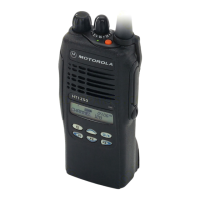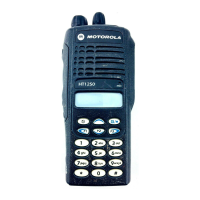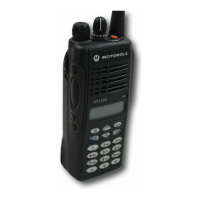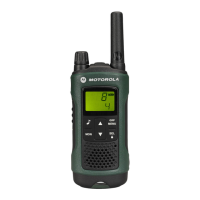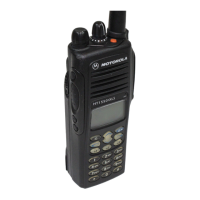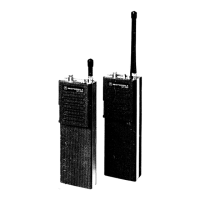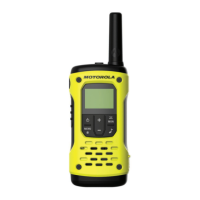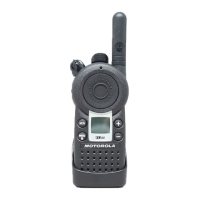7-20 Low Band, 800 MHz, PassPort & 900 MHz Theory of Operation: 900 MHz Receiver
Figure 7-13. 900 MHz Receiver Block Diagram (for PCB No. 8471203M01)
7.11.1 Receiver Front-End
The RF signal is received by the antenna and applied to a low-pass filter. For 900 MHz, the filter
consists of L104, L105, C114, C115, C124, C125, and C126. The filtered RF signal is passed
through the antenna switch. The antenna switch circuit consists of two PIN diodes(CR101, and
CR102) and a pi network (C115, L109, and C138). The signal is then applied to a fixed tuned
ceramic bandpass filter, FL300.
The output of the bandpass filter is coupled to the RF amplifier transistor Q302 via C300. The RF
amplifier provides a gain of approximately 14 dB. After being amplified by the RF amplifier, the RF
signal is further filtered by a second fixed tuned ceramic bandpass filter, FL301.
Both the pre and post-RF amplifier ceramic filters have similar responses. The insertion loss of each
filter across the 935–941 MHz band is less than 2 dB.
The output of the post-RF amplifier filter is connected to the passive double balanced mixer, U301,
through matching components C321, and L311. After mixing with the first LO signal from the voltage
controlled oscillator (VCO) using low side injection, the RF signal is down-converted to the
109.65 MHz IF signal for PCB No. 8485910Z01. For PCB No. 8471203M01, the RF signal will down-
converted to 73.35MHz.
The IF signal coming out of the mixer is transferred to the crystal filter (FL350) through a resistor pad
and a diplexer (C312, and L306). For PCB No. 8485910Z01, the matching to the input of the crystal
filter is provided by L353, L354, C377, and C378. For PCB No. 8471203M01, the matching to the
input of the crystal filter is provided by C350, C351 and L351. The crystal filter provides some of the
necessary selectivity, and intermodulation protection.
7.11.2 Receiver Back-End (For PCB No. 8485910Z01)
The output of crystal filter FL350 is matched to the input of the dual gate MOSFET IF amplifier
transistor U352 by components L355, R359, and C376. Voltage supply to the IF amplifier is taken
from the receive 5 volts (R5). AGC voltage is applied to the second gate of U352. The IF amplifier
provides a gain of about 11dB. The amplified IF signal is then coupled into U351(pin 3) via L352,
R356 and C365 which provides the matching for the IF amplifier and U351.
Crystal
Filter
1st Mixer
RF
Amp
Antenna
Filter
RF Amp
Filter
Recovered Audio
RSSI
RX from
ntenna Switch
Inj Filter
First LO
from Synthesizer
IF
Amp
Crystal
Filter
IF
Amp
Demodulator
Ceramic
Resonator
Cer Fltr
Cer Fltr
4F
6G
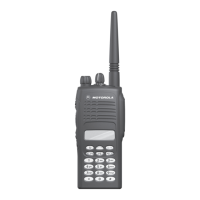
